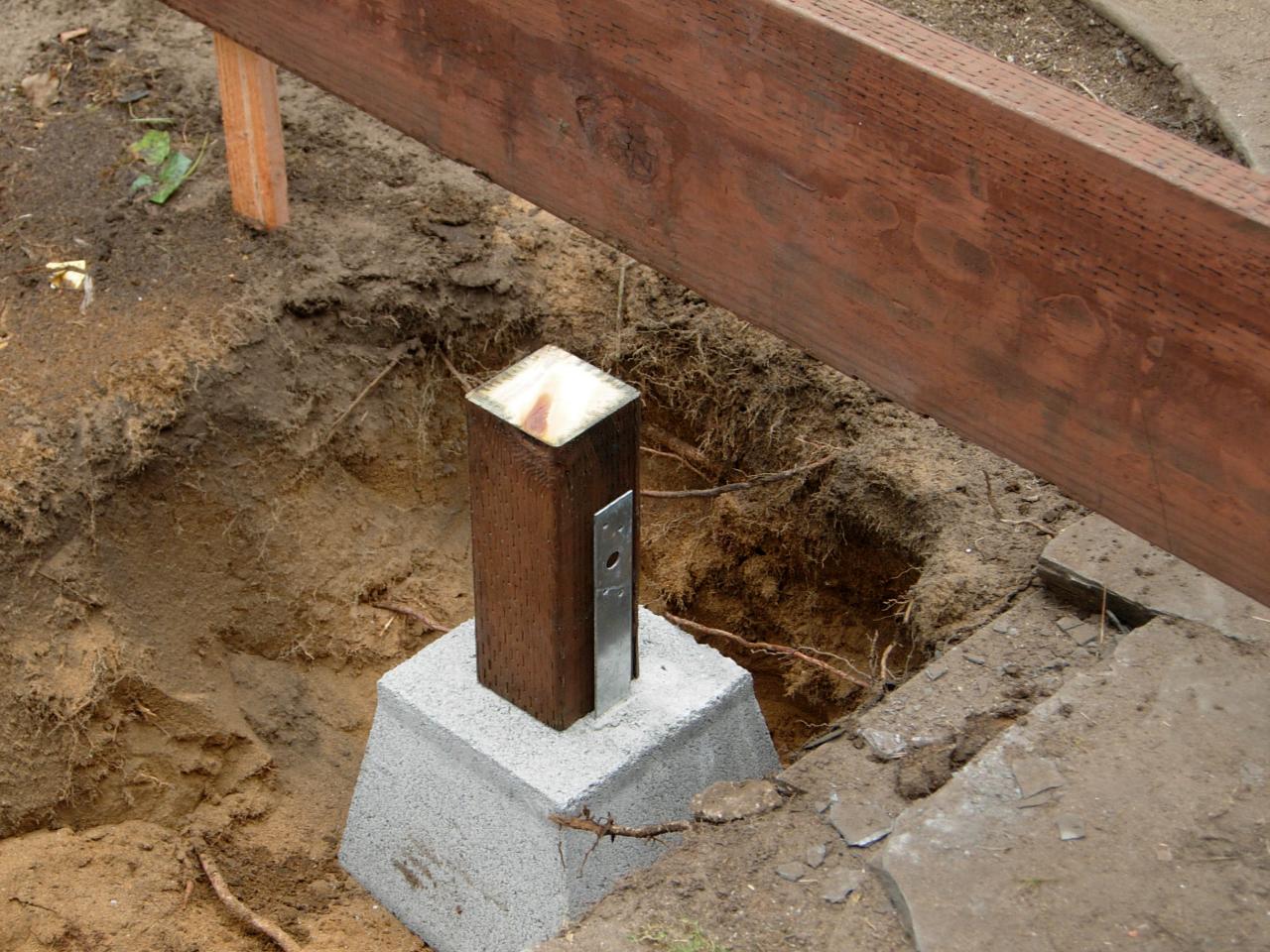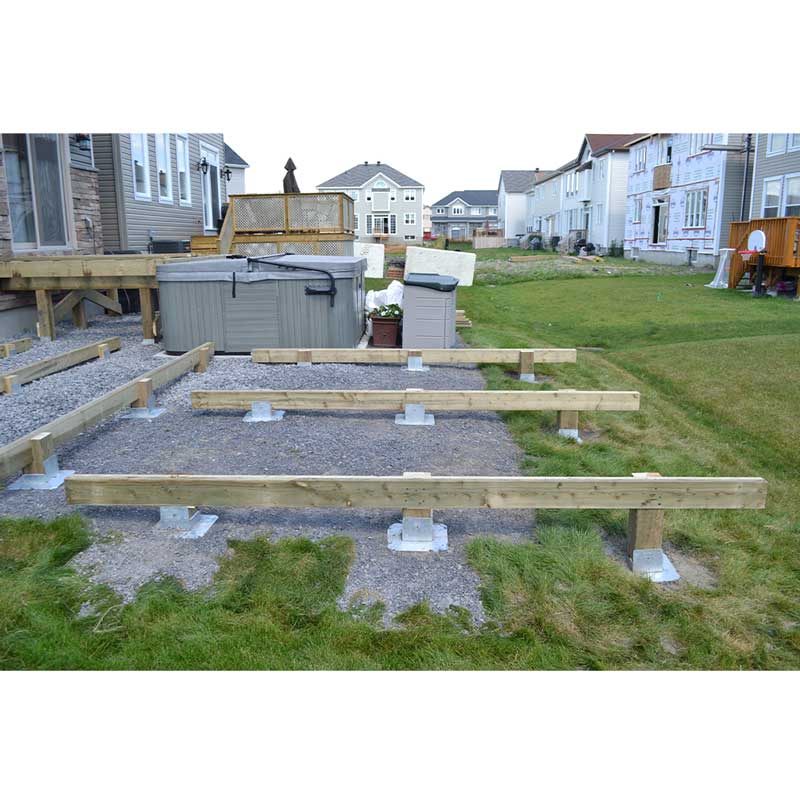Specialist Tips for Setting Up Deck Footings to Support Your Outdoor Room
When it involves building a deck, among the most crucial components to think about is the installation of correct footings. These footings are the structure upon which your exterior area will rest, giving security and assistance for years ahead. Yet exactly what does it take to mount deck footings correctly? In this conversation, we will certainly discover expert pointers and techniques that can assist ensure a successful and durable deck setup. From selecting the right kind of grounds to avoiding common errors, we will certainly give you with the knowledge and insights you require to confidently begin on your deck-building trip. Let's dive right in and discover the secret to a durable and strong outside area.
Significance of Proper Deck Footings
Correct deck grounds are vital for making sure the security and durability of your outdoor room. When creating a deck, it is vital to pay interest to the structure on which it will certainly relax. Deck grounds give the required assistance for the whole framework and assistance disperse the weight evenly - Deck Footings. Without strong and effectively set up footings, your deck might end up being unstable, bring about safety and security risks and costly fixings.

Along with security, appropriate deck footings also add to the long life of your outside space (Deck Footings). Footings that are made and built to stand up to the aspects and soil problems in your area will assist avoid the deck from moving or clearing up over time. By ensuring the grounds are correctly sized and mounted, you can lessen the risk of damages to the deck structure, expanding its life expectancy and decreasing the demand for expensive repairs or substitutes

Selecting the Right Sort Of Grounds
When choosing the proper kind of grounds for your deck, it is very important to take into consideration variables such as dirt problems, regional building ordinance, and the general style of your outside area. The type of footing you choose will play an essential function in guaranteeing the stability and longevity of your deck.
One common kind of ground is the concrete ground. Concrete footings appropriate for a lot of dirt conditions and supply superb support for decks. They are usually mounted below the frost line to protect against moving and settling because of freezing and thawing cycles. One more alternative is helical piers, which are optimal for locations with unpredictable dirt or high water tables. These piers are screwed right into the ground and offer strong assistance for the deck.
Sometimes, you might need to make use of specific grounds, such as stack footings or deep structures, if you are developing a multi-level or big deck. These footings are developed to distribute the weight of the deck over a larger location, ensuring security and preventing working out or sinking.
Before selecting a type of footing, it is necessary to consult neighborhood building regulations and laws to make certain conformity. Additionally, consider the design and intended use your outdoor room. Factors such as the size, shape, and load-bearing website here needs of your deck will affect the sort of footing that is most suitable.
Preparing the Ground for Footing Setup
To properly prepare the ground for footing installation, it is important to assess the soil conditions and take needed actions to make sure stability and sturdiness of the deck. The initial action is to excavate the area where the the original source grounds will certainly be installed.
Once the area has been excavated, the following action is to portable the dirt. This can be done using a plate compactor or by making use of a hand meddle. Compacting the dirt aids to eliminate any kind of voids or air pockets, which can result in working out and instability gradually.
After condensing the soil, it is essential to lay a layer of crushed rock or crushed stone at the base of the excavation. This will offer water drainage and aid to avoid water from merging around the footings, which can bring about erosion and instability.
Step-by-Step Overview to Setting Up Deck Footings
After correctly preparing the ground for footing installment, the next step is to start the procedure of mounting deck footings. This detailed guide will offer you with a clear understanding of exactly how to mount deck footings for your outdoor space.
Establish the area: Start by noting the placements of the deck footings making use of stakes and string. Make sure that the places align with the design and layout of your deck.
Dig the openings: Use a blog post opening miner or an auger to dig the openings for the footings. The depth and size of the openings need to remain in conformity with local building regulations and the particular needs of your deck layout.
Level the holes: Use a level to make sure that the holes are dug to the proper deepness and are level with each other. (Deck Footings)
Add crushed rock: Location a layer of gravel at the end of each hole to boost water drainage and protect against the timber from decaying.
Insert the grounds: Position the grounds into the holes, making here certain they are level and plumb. Make use of a degree and a gauging tape to make certain precision.
Safeguard the grounds: Put concrete right into the holes around the grounds, filling them to the top. Make use of a blog post level to guarantee the footings continue to be degree as the concrete sets.
Enable time for curing: Let the concrete treatment according to the supplier's guidelines before proceeding with the deck construction.
Common Mistakes to Avoid During Footing Installment
One vital aspect to consider during the setup of deck footings is avoiding typical mistakes that can endanger the stability and long life of your outside space. While deck grounds might look like a straightforward and simple part of the building procedure, forgeting particular factors can result in costly fixings and possible safety risks down the line.

Additionally, neglecting to install proper water drainage actions can trigger water to build up around the grounds, causing rot, decay, and the ultimate weakening of the deck's foundation. In addition, utilizing the incorrect sort of footing product or failing to sufficiently secure the grounds can jeopardize their structural honesty.
To avoid these errors, it is important to speak with a specialist or follow sector standards to ensure proper footing installment. By doing so, you can ensure the stability and durability of your outside room, providing a safe and satisfying environment for many years to find.
Final Thought
Finally, mounting correct deck grounds is crucial for the security and longevity of your outdoor room. By choosing the best kind of footings and appropriately preparing the ground, you can ensure a solid structure for your deck. Adhering to a detailed overview and staying clear of usual blunders throughout footing installment will certainly additionally improve the longevity and safety of your deck.
Proper deck grounds are essential for guaranteeing the stability and long life of your exterior area. The footings serve as a link in between the ground and the deck, enabling the weight of the deck and its residents to be dispersed evenly right into the dirt.One common type of ground is the concrete ground. Insert the grounds: Position the grounds into the holes, making certain they are degree and plumb. Protect the footings: Pour concrete into the openings around the grounds, filling them to the top.